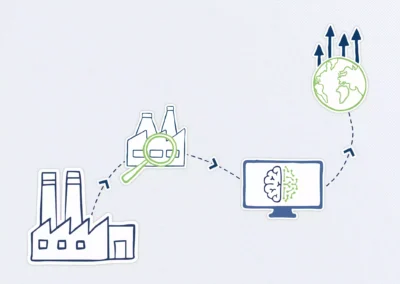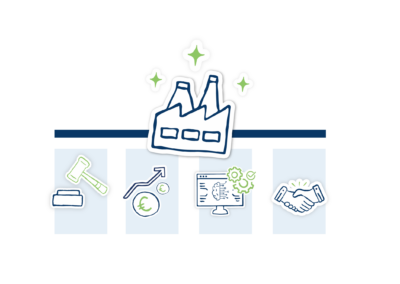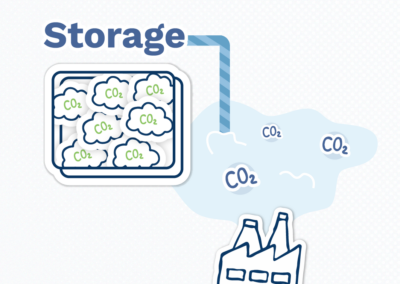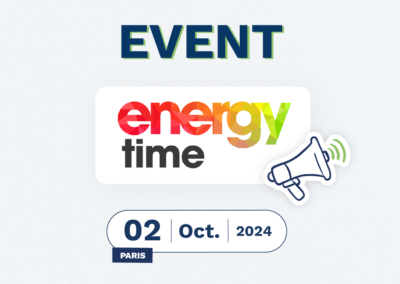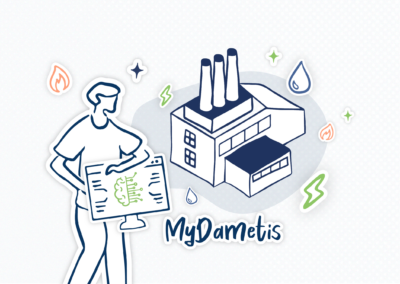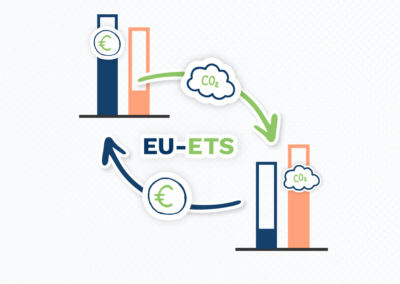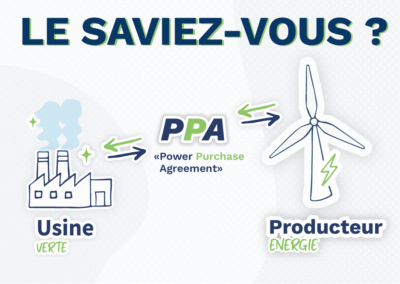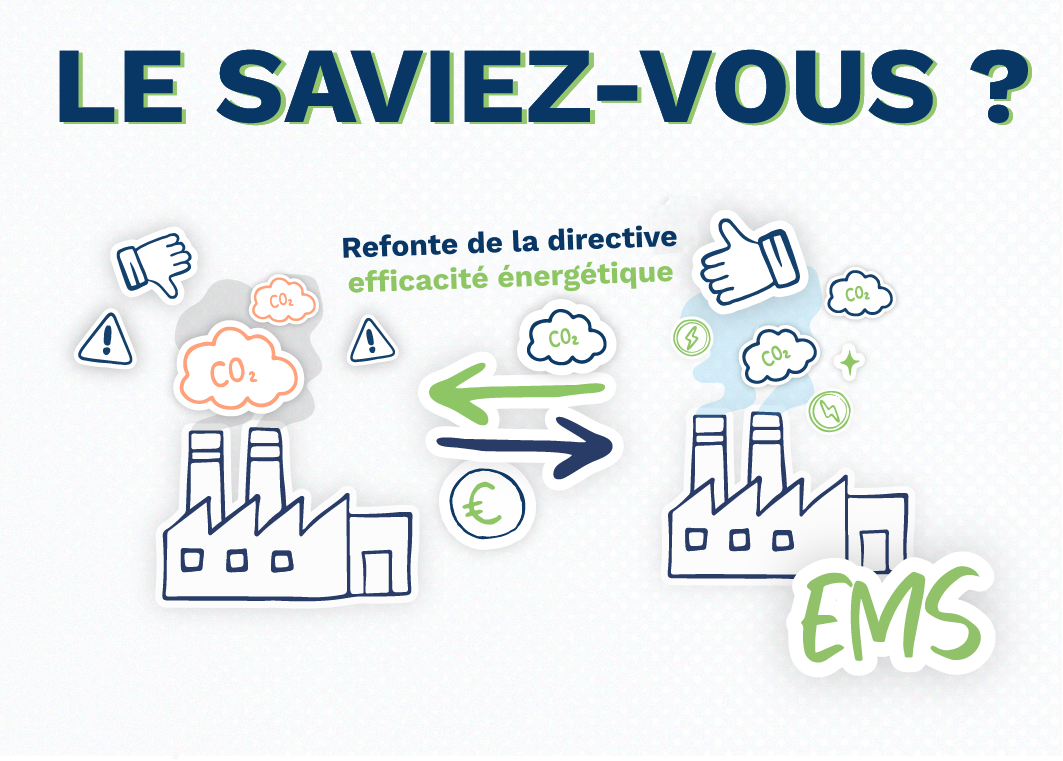
The Redesign of the Energy Efficiency Directive Introduces an Obligation to Implement an EMS
Revision of the Energy Efficiency Directive as part of the ‘Fit for 55’ package
To achieve carbon neutrality by 2050, the European Union has raised its greenhouse gas emission reduction target to at least 55% by 2030 compared to 1990 levels (up from a previous target of 40%). This ambitious goal requires an adaptation of various European regulations within a legislative package known as the “Fit for 55” package. It covers different areas including the Emissions Trading System, renewable energy, energy taxation, and of course, energy efficiency.
It is within this context that the 2012 Energy Efficiency Directive has been redesigned. The new version was published on September 13, 2023.
A target of 11.7% energy savings by 2030, but actually much more
The directive sets a target to reduce consumption by at least 11.7% by 2030 (compared to a previous target of 4.5%) against the projections of the EU’s 2020 reference scenario. In other words, this is not about energy savings compared to a real reference consumption but against anticipated energy consumption.
The energy efficiency targets of the directive (Mtoe*)
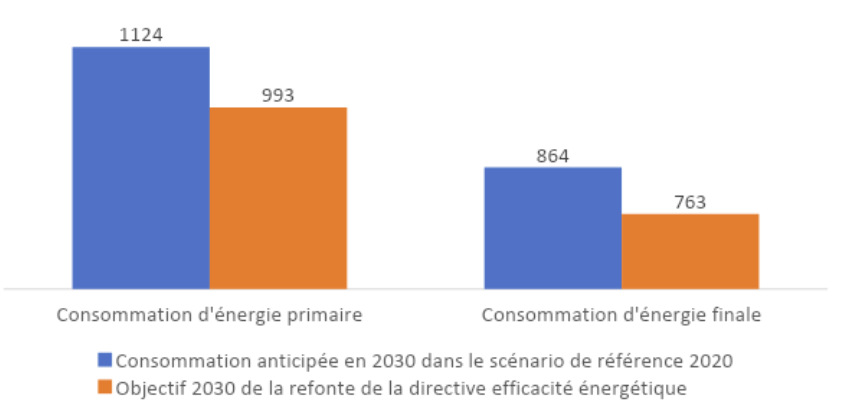
* Million tonnes of oil equivalent
Source: Directive 2023/1791
The directive specifies that ‘Member States shall collectively ensure a reduction in energy consumption (…) so that the final energy consumption of the Union does not exceed 763 Mtoe’ by 2030..
Elle indique également que « les États me Member States strive to collectively contribute to achieving the European Union’s indicative primary energy consumption target of not exceeding 993 Mtoe by 2030. These caps correspond, in effect, to an 11.7% reduction from the 2020 energy consumption projections. However, by this date, consumption was higher than anticipated.
In its 2020 reference scenario, the EU projected primary energy consumption at 1,177 Mtoe, but according to Eurostat data, it was actually 1,236 Mtoe. Not exceeding 993 Mtoe thus means achieving nearly 20% savings! And compared to primary consumption in 2022, the target is even more than 21%.
The same applies to final energy. The EU consumed 906 Mtoe in 2020 and 940 Mtoe in 2022, so the 2030 target compared to these two references is -16% and -19% respectively.
The European Environment Agency has also expressed doubts about the EU’s ability to meet its energy efficiency targets. Unless, which cannot be ruled out, more stringent measures are introduced subsequently. The redesign of the energy efficiency directive last September is probably just a step.
Member States pushed to make greater efforts
The energy efficiency directive calls on Member States to set national targets for final energy consumption to achieve the collective target of final energy consumption of 763 Mtoe by 2030. It goes further by assigning them an annual energy savings pace. Member States are now subject to the following obligations:
- 1.3% final energy savings per year in 2024 and 2025
- 1.5% final energy savings per year in 2026 and 2027
- 1.9% final energy savings per year between 2028 and 2030
Therefore, there is a significant intensification of efforts required from Member States. To encourage them to achieve energy savings, the directive provides for various measures. It specifically targets public sector actors, stating that the public sector must play a leading role in energy efficiency. It sets a target of at least 1.9% annual final energy consumption reduction for all public bodies (compared to the reference year 2021). Public buildings are heavily targeted, with the directive setting the goal of renovating at least 3% of the total floor area of buildings owned by public bodies.
The directive also pays particular attention to people in energy poverty, with Member States required to dedicate part of their efforts to this population. It also calls for the implementation of energy efficiency obligation schemes, a system that already exists in France with energy saving certificates.
The implementation of an energy management system
For companies, one of the main direct impacts of the redesign of the energy efficiency directive is the obligation to implement an system of energy management. (SME). This measure only concerns companies whose consumption over the past three years has averaged more than 85 TJ (terajoules) per year, which is 23.6 GWh. In this calculation, all energy vectors (electricity, natural gas, etc.) are included. Companies required to implement an energy management system have until October 11, 2027, at the latest to comply.
Companies whose average annual energy consumption has exceeded 10 TJ (2.8 GWh) over the past three years, and that do not implement an energy management system, must undergo an energy audit. The first energy audit must be conducted by October 11, 2026, at the latest, and then renewed every four years. An action plan must subsequently be developed based on the audit recommendations.
Both categories of companies must also provide national authorities with the collected data. The directive further encourages Member States to motivate companies to include their energy and water consumption data in their annual reports.
In the industry, implementing an energy management system can be complex and time-consuming. To simplify this task, many industrials opt for the implementation of an EMS (Energy Management Software, also commonly referred to as an energy management system) or an EMOS (Energy Management and Optimization Software).
Linked to sensors placed within the industry, the EMS collects real-time data, easily tracks it, detects any anomalies, and ultimately recommends solutions impacting energy performance. However, the EMOS goes further by addressing the operational needs of all company departments in terms of energy and water management. This tool standardizes indicators and working methodologies from one site to another. Thus, it facilitates the tracking of deviations and data analyses, enabling teams to make informed decisions and implement corrective actions. With the EMOS, it is easier to establish a detailed action plan that complies with ISO 50001 standards.
And what if you opted for our software MyDametis? The only software designed 100% by experts. Installed within your factory, our energy management system (EMS/EMOS) collects your data, models your plant, detects deviations, and recommends the best solutions to achieve your energy and environmental performance goals.










